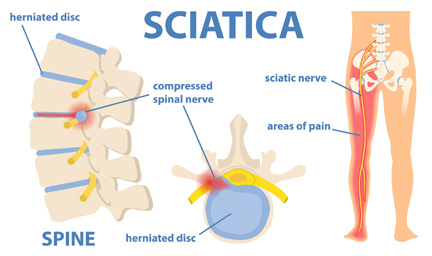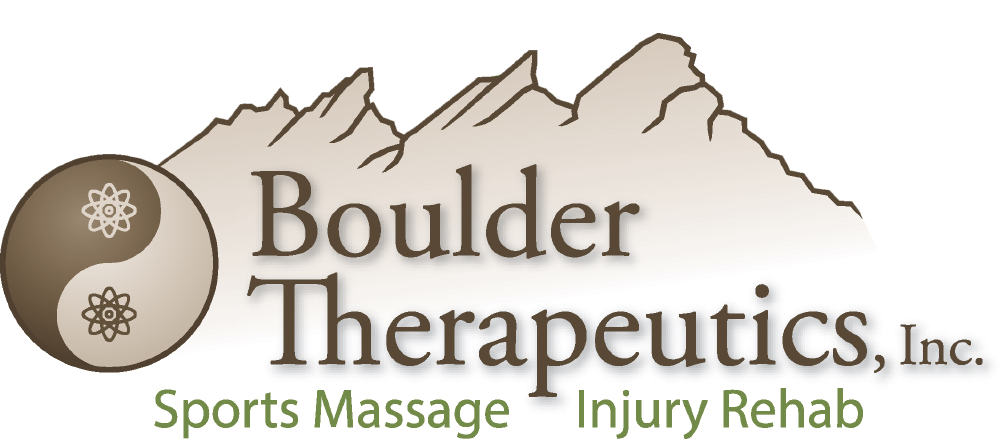Do Massage Therapy and Acupuncture Help Sciatica?
 Sciatica is a common condition that affects millions of people. It is characterized by pain that radiates along the sciatic nerve, which runs from the lower back down both legs, often causing numbness or tingling sensations. The pain can be severe, making it difficult to perform daily activities.
Sciatica is a common condition that affects millions of people. It is characterized by pain that radiates along the sciatic nerve, which runs from the lower back down both legs, often causing numbness or tingling sensations. The pain can be severe, making it difficult to perform daily activities.
Many people with sciatica turn to massage therapy and acupuncture as natural, non-invasive treatment options. But do these treatments work? Let’s explore the benefits of massage therapy and acupuncture for sciatica and outline the different techniques that massage therapists and acupuncturists use to treat this condition.
Sciatica Definition
 Sciatica is a condition that occurs when the sciatic nerve, which runs from the lower back down to the feet, becomes compressed or irritated. This compression can be caused by a variety of factors, including muscular tension, herniated discs, spinal stenosis, and degenerative disc disease.
Sciatica is a condition that occurs when the sciatic nerve, which runs from the lower back down to the feet, becomes compressed or irritated. This compression can be caused by a variety of factors, including muscular tension, herniated discs, spinal stenosis, and degenerative disc disease.
Sometimes, tight muscles, like the piriformis or gluteal muscles, can mimic symptoms of sciatica resulting in a condition called, “pseudo-sciatica”. Symptoms of sciatica can include:
• Sharp pain in the lower back or hip that radiates down the leg.
• Tingling or numbness in the leg or foot.
• Weakness in the leg.
How Massage Therapy Can Help Sciatica
Massage therapy is a popular alternative treatment for sciatica. It involves manipulating the soft tissues of the body to promote relaxation and reduce tension. Massage can help relieve sciatica pain by:
• Reducing muscle tension: Tight muscles can compress the sciatic nerve, causing pain. Massage can help loosen tight muscles and alleviate pressure on the nerve.
• Increasing blood flow: Massage can improve circulation, which can help reduce inflammation and promote healing.
• Improving overall mobility.
• Releasing endorphins: Massage can stimulate the release of endorphins, which are natural painkillers produced by the body.
Massage Techniques that Help Relieve Sciatica
There are several types of massage that can be effective for sciatica, some of the more effective strategies that advanced therapeutic massage therapists utilize are as follows:
Myofascial Release is a technique that involves breaking up “stuck” tissue to increase circulation and release tension. By applying sustained pressure to the connective tissue that surrounds muscles (the fascia), myofascial release can release tension and improve mobility. This can be particularly effective for treating sciatica, as it can help to relieve pressure on the sciatic nerve and reduce pain and inflammation.
Trigger Point Therapy is another technique that is commonly used to treat sciatica. This technique involves applying pressure to specific points in the muscles (known as trigger points) to release tension and alleviate pain. By targeting trigger points in the lower back and buttocks, massage therapists can help to reduce pain and improve overall mobility.
Neuromuscular Therapy is a type of massage that focuses on the relationship between the nervous system and the muscles. By applying pressure to specific areas of the body, and including passive or active movement, massage therapists can help to release tension and improve overall function. This can be particularly effective for treating sciatica, as it can help to relieve pressure on the sciatic nerve and reset muscle holding patterns.
Other Modalities Used by Massage Therapists
In addition to myofascial release, trigger point therapy, and neuromuscular therapy, massage therapists may also use a variety of other techniques to treat sciatica. For example, Deep Tissue Massage can be effective for releasing tension in the muscles and promoting overall relaxation. Swedish massage, which uses long, flowing strokes to promote relaxation, can also be helpful in managing sciatica symptoms. Manual Stretching may be utilized, where the massage therapist moves and stretches you to increase your range of motion. Some massage therapists even use massage tools or cupping to release the soft-tissue, while others may look at your alignment and posture to help unwind the underlying cause of your sciatic condition.
Acupuncture for Sciatica
Acupuncture is another alternative therapy that has been used to treat sciatica. It involves inserting thin needles into specific points on the body to stimulate healing. Acupuncture can help relieve sciatica pain by:
• Stimulating blood flow: Acupuncture can improve circulation, which can reduce inflammation and promote healing.
• Regulating the nervous system: Acupuncture can help regulate the nervous system, which can reduce pain and promote relaxation.
• Releasing endorphins: Like massage, acupuncture can stimulate the release of endorphins to reduce pain.
• Deep Needling or Trigger Point Dry Needling can help by releasing specific points and areas of tightness. Some therapists run electrical stimulation through the needles to help facilitate a release.
How Else can Acupuncture Help Sciatica
Some Acupuncturists also use manual release techniques like massage therapists. They may provide Gua Sha, where the soft edge of a tool is used to release the superficial fascia and increase circulation. And some utilize Cupping, which is a suction device used to release soft-tissue and increase circulation.
Acupuncture is considered safe and highly effective, but it’s important to find a licensed acupuncturist who uses sterile needles and follows proper safety protocols.
Collaboration with Other Practitioners
While massage therapy can be an effective treatment option for sciatica, it is often most effective when used in conjunction with other therapies. For example, physical therapy can be helpful in improving overall mobility and strength, while chiropractic care can help to address any underlying structural issues that may be contributing to the condition.
In addition, working with a healthcare team can help to ensure that all aspects of your condition are being addressed. For example, if you are struggling with depression or anxiety because of your sciatica, working with a mental health professional can be beneficial in improving overall well-being.
Which Therapy is Right for You?
Both massage therapy and acupuncture can be effective treatments for sciatica. Your care plan is often most effective when used in conjunction with multiple therapies. However, the best therapy for you will depend on your individual needs and preferences. If you prefer a hands-on approach and enjoy the relaxation benefits of massage, massage therapy may be the right choice for you. If you’re comfortable with needles and prefer an East/West holistic approach, acupuncture may be a better fit.
It’s important to consult with a healthcare professional before starting any new treatment for sciatica. They can help you determine the best course of action and ensure that you’re receiving safe and effective care.
Find Relief from Sciatica!
Massage therapy and acupuncture are two natural therapies that can be effective in treating sciatica pain. Both therapies work by reducing muscle tension, improving circulation, promoting relaxation, and improving overall mobility. While there is no one-size-fits-all solution for sciatica, these therapies can provide relief for many people. If you are struggling with sciatica, be sure to consult with a licensed healthcare professional to ensure that you’re receiving safe and effective care.
 About the Author: David is the founder of Boulder Therapeutics, Inc, and has been treating athletes and injured clients since 1999. He is passionate about educating people on massage therapy, injury rehab & injury prevention, sports performance and stretching. He has learned over the years that getting enough care early-on dramatically helps reduce symptoms, and makes them much more manageable. He advises his clients on the frequency of their care and when they may need to collaborate with other healthcare professionals.
About the Author: David is the founder of Boulder Therapeutics, Inc, and has been treating athletes and injured clients since 1999. He is passionate about educating people on massage therapy, injury rehab & injury prevention, sports performance and stretching. He has learned over the years that getting enough care early-on dramatically helps reduce symptoms, and makes them much more manageable. He advises his clients on the frequency of their care and when they may need to collaborate with other healthcare professionals.
